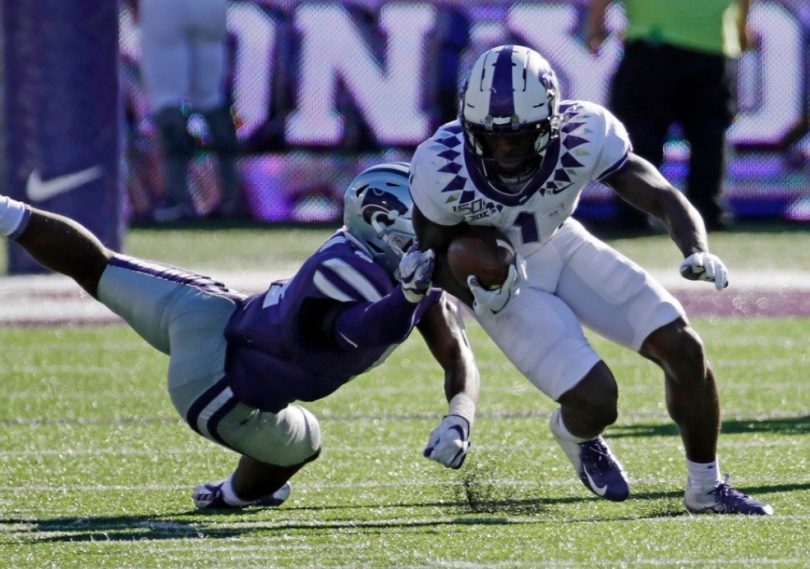The polite thing to say is that it never comes down to one play.
And of course, logically, it doesn’t. A college football game can have nearly a hundred plays. Logically, they all matter. Big or small, they all set up some situation or scenario that sets up another that sets up another.
But coaches often go home thinking of one play. In Gary Patterson’s case on Saturday night, it was the second-and-5 in the fourth quarter when Kansas State quarterback Skylar Thompson ran 61 yards in a tie game.
The unexpected burst — the longest play of the game by far for either team — set up the winning touchdown in the Wildcats’ 24-17 home victory against TCU.
“To be honest with you, it came down to me,” Patterson told the TCU network radio broadcast. “I went to the zone blitz category one too many times. I thought they’d be in a tight end set, and they split him out and ran a quarterback draw. … There were a lot of other mistakes, but the bottom line to it is, I held everybody to a higher standard, and I needed to make one more call.”
That’s fine and right by Patterson to take the arrows. The play defined the game, overshadowing even Max Duggan’s beastly, tackle-proof, stiff-arming 46-yard touchdown run that produced the 17-17 tie a quarter earlier.
Funny thing about the one-play theory, of course.
There was another play after that.
Three plays later, in fact. On fourth-and-1, Thompson did it again, evading pressure from TCU’s Ross Blacklock on a bootleg and making up the ground he gave to loop around to the sticks. Needing one yard, he put his body on the line for two. The new set of downs became his game-winning touchdown run five plays later.
“We had a guy there,” Patterson said. “Ran a blitz, and there was a guy, he was going to flush him out. And then we didn’t make the play. You have to do it.”
So, two plays.
Unless you count the blocked punt.
Then it’s three.
Or Duggan’s overthrow of Te’Vailance Hunt on the first series.
Or Hunt failing to hang on to a second-and-4 pass in the third quarter that would have resulted in a first down, to be followed on the next snap by another Duggan overthrow, this time of Taye Barber. Make either play, and TCU keeps going in a 17-17 game.
That’s five.
Remember third-and-17? On the next possession, K-State converted that down and distance from its 18-yard line with a 33-yard pass to its most athletic receiver, Malik Knowles, who shook the socks off Kee’yon Stewart in single coverage on the sideline. Even though the eventual result was no points, it changed field position and zapped the last of the momentum TCU had from Duggan’s electric run.
So that’s six. At least. Patterson needn’t blame himself.
Many hands pulled a piece out of the Jenga tower that eventually collapsed in a 3-3 record, with Texas coming to Fort Worth in a week.
“We have to play with more confidence on offense,” Patterson said. “We’ve got to get to where we can throw the ball better, obviously. We have enough people to be able to do that. We ran the ball the way we needed to. Controlled the line of scrimmage, especially in the first half. And defense, if we do our jobs and keys, we probably have another five things we would have stopped them.”
In a meaningful situation, with the ball backed up at the opponent’s 5-yard line, the defense crumbled. The offense provided its fewest points of the season. With the blocked punt, special teams chipped in its own contribution to the pile of trouble.
A 3-3 record isn’t built on one play.
Accept Patterson’s explanation graciously. It’s polite to say one play doesn’t decide a game. In the Horned Frogs’ case, it’s also very right.
(Photo by Gregg Ellman, TCU Athletics)







